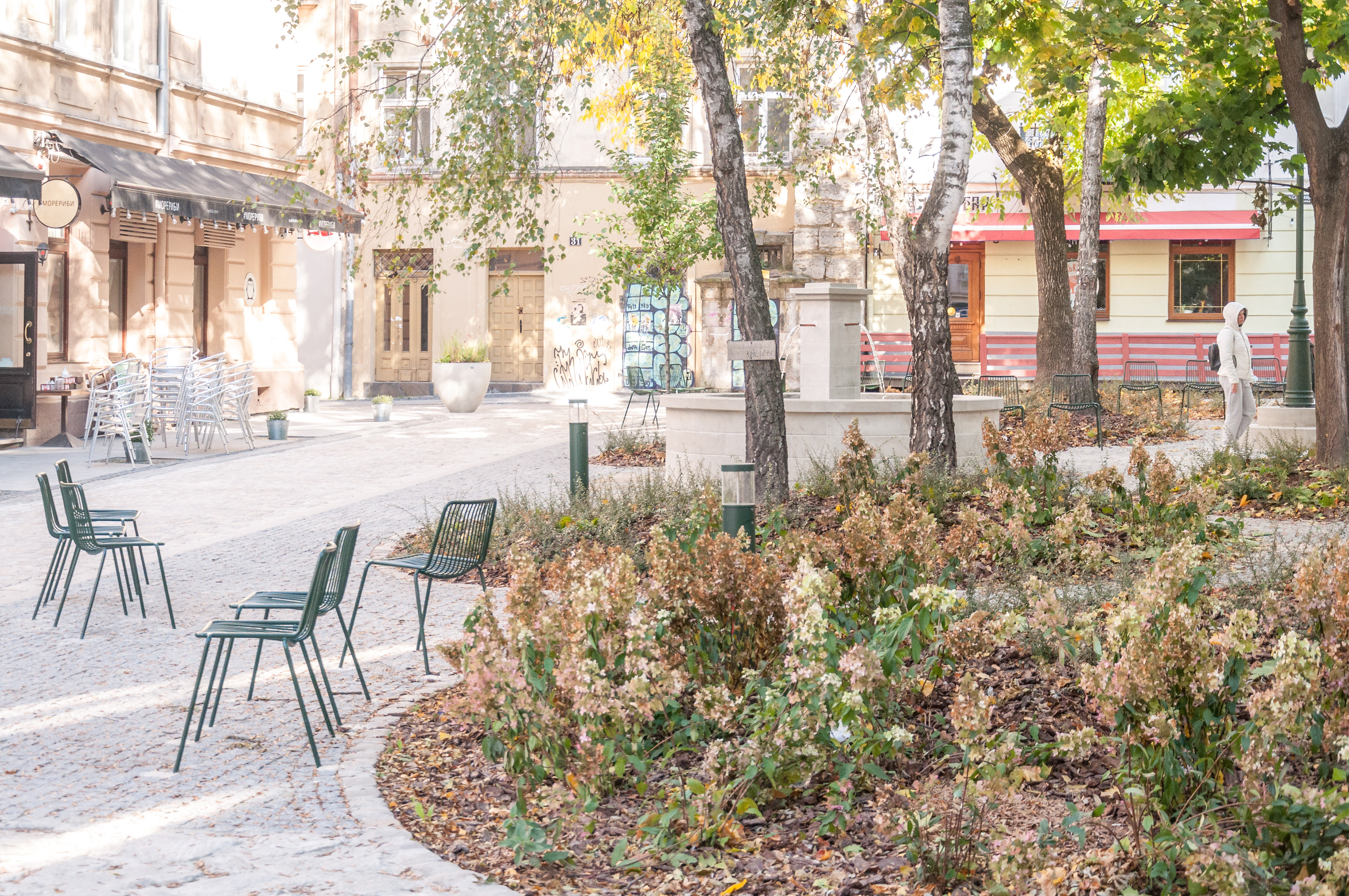Project by: Urbanideas / RUTHENIA
Project Homepage: https://www.facebook.com/urbaanideas
Project location: Koliivshchyny square, Lviv, Ukraine.
Design year: 2018-2020
Year Built: 2021
Client: Department of Historic Environment Protection | Lviv City Council within the project Re_HERIT: Joint responsibility for common heritage.
General contractor: Welt Capital LCC
Manufacturer of urban equipment: LOZA & Dobro design studio
Manufacturer of urban equipment: LOZA & Dobro design studio
Awards:
Prize of National Union of Architects of Ukraine 2021 in the nomination "Landscape Architecture, Urban Environment Design, Realized Project
Selected works / Edition 2022 |The European Prize for Urban Public Space / www.publicspace.org
History of Koliivshchyny Square
The square originated in the early Austrian period, after the street, named New was laid on the site of the dismantled southern ridge of the city fortifications (modern Brativ Rohatyntsiv street) in 1875. The area between The Old Jewish str. (another names: Jewish, Vekslyarska str.) and Brativ Rohatyn str. (earlier Nova str.) were formed on the site of the Galezov House and the "Kopl Tevlevych Wasteland", which stood near the ancient "Jewish Tower". Initially, the square was called Żydowska, and in 1871 it was renamed Vekslyarska square. Soviet power in 1944 changed its name to Koliivshchyna square. By the beginning of the twentieth century, there was a well in the square that supplied water to the entire Jewish section.
Initially, the well for water supply of the Jewish quarter was located in the middle of Staroyevreiska str., at the intersection with Fedorova str. This well ("chest") is mentioned in city acts as early as 1556. This well provided water to the entire Jewish area. On May 31, 1844, the magistrate approved a project for a well with white stone masonry, carried out by Johann Schimzer. The project, made by Shimzer, is stored in the Central State Historical Archive. The water in the well was piped to the top (gushing), which is also visible in the design of the well.
The stone masonry of the lower tier of the well was discovered during archeological excavations in 2020.
Koliivshchyny Square is located in the ancient Jewish quarter of the Old Town in Lviv. It is characterized by dense urban fabric with narrow streets. The square was formed quite late, after the dismantling of one of the ancient stone houses and on the site of the Wasteland. The place is characterized by a very small size, about 600 sq.m. corresponding to the size of the two plots. Facades of neighboring houses are turned to the square, rebuilt later in different styles, which diversify the overall look of the square. The character of the square is closed and very intimate, in fact, this cozy atmosphere is very valuable in the crowded urban environment of the historic city center.
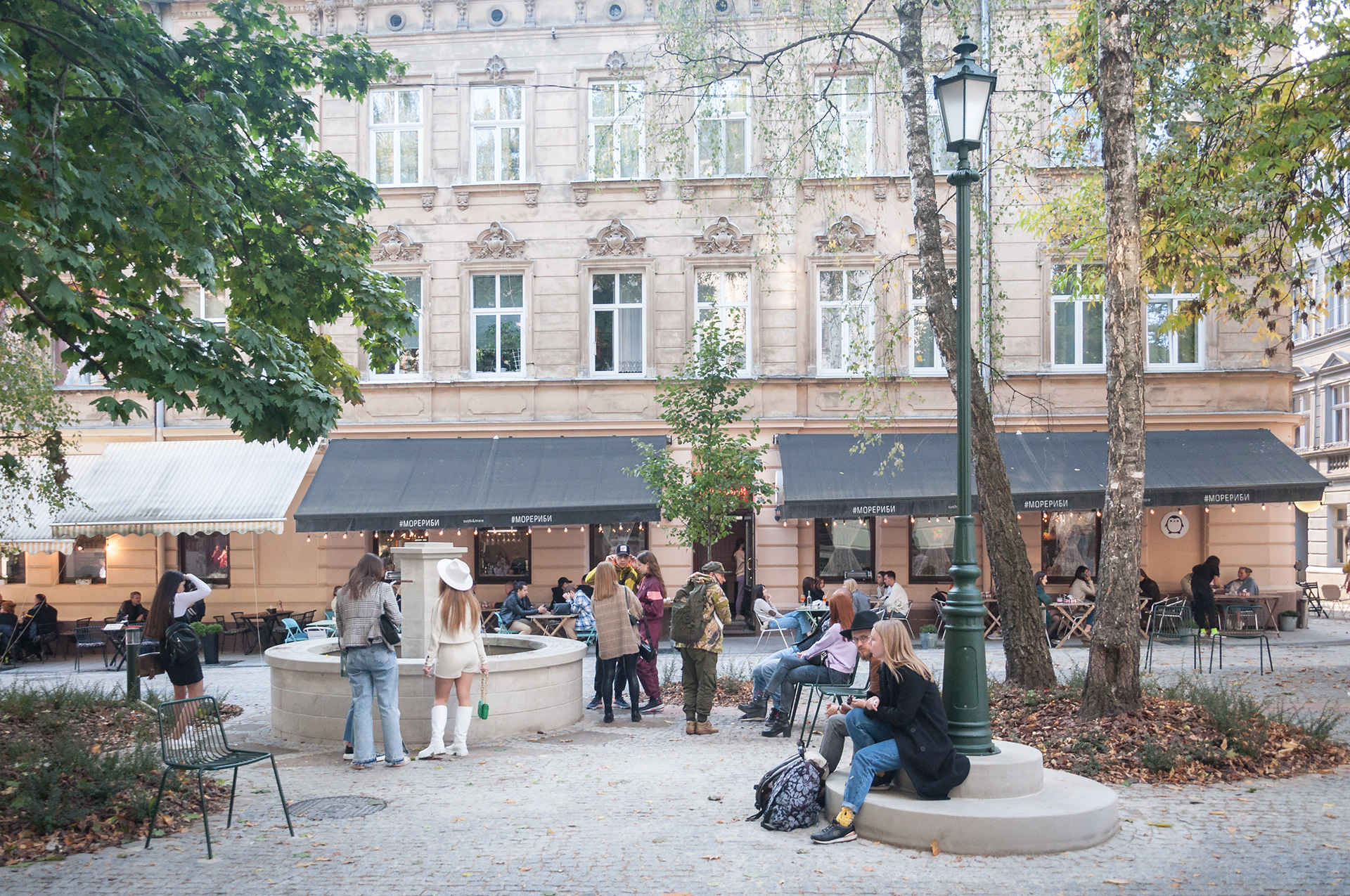
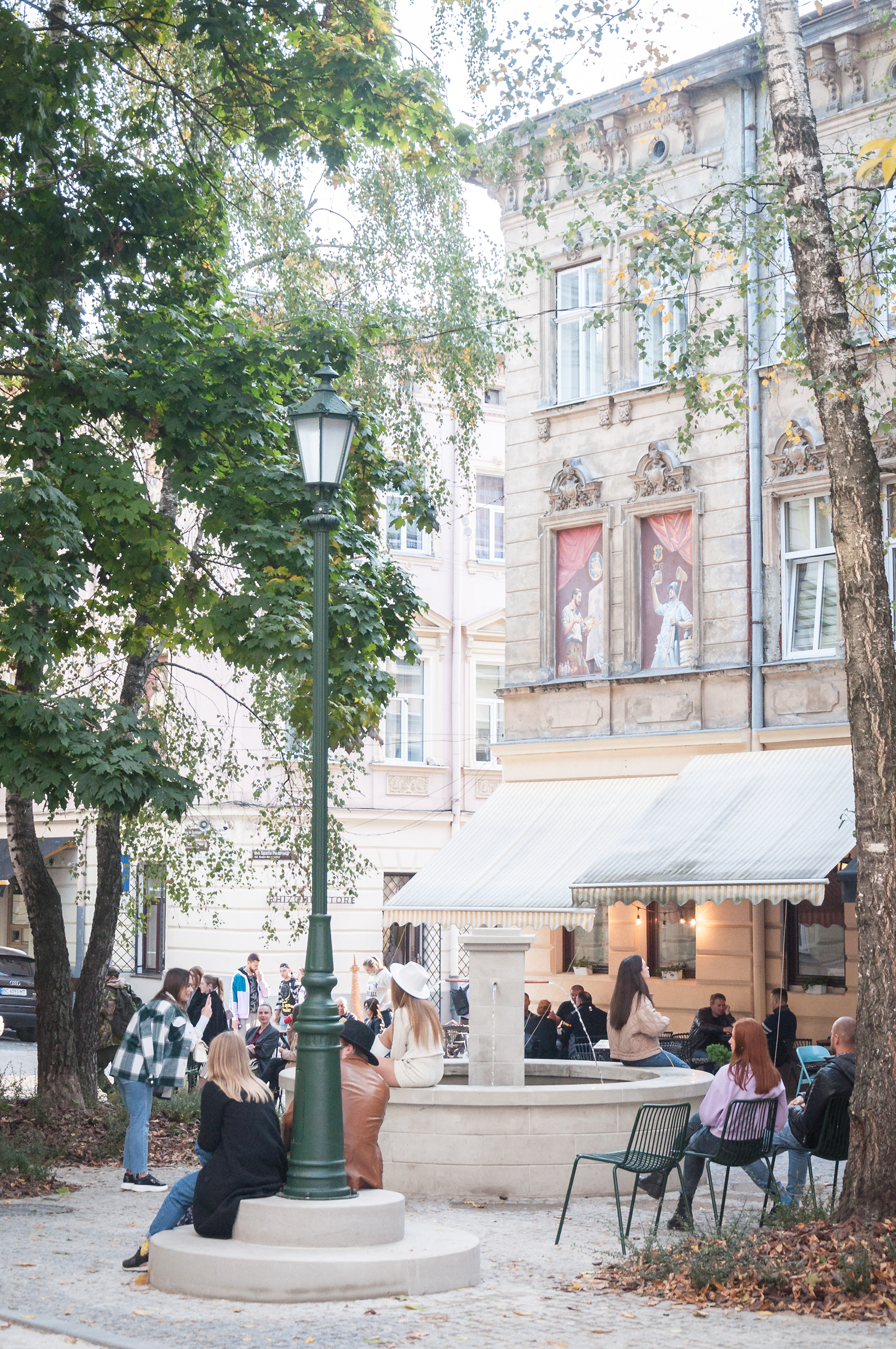
Paving and types of coverage




On the basis of archeological excavations on Koliivshchyna Square, it was found that the area did not have a hard surface before, but a soil surface with admixtures of building material from a collapsible building that existed on the area until the XVIII century. White stone paving (limestone) was present in the cellars (underground floor) of the later dismantled buildings. Limestone was also laid around the ancient well, which in good condition was obtained, cleaned and re-laid around the restored well, which existed on the square until the XVIII century. This tracing is made at the level of paving, symbolically indicating the presence of an ancient well on the square.
During the reconstruction of the square paving from the XIX - early XX centuries is used - large cobblestones (200x200x200mm). It also provides for the reuse of existing stone curbs and the replacement of existing concrete curbs of poor quality with new stones, similar to existing , with the same radius curves.
Granite tiles 300x300x60mm of light grey color, Pokostivske deposit (heat-treated, non-slip) are used in paving of the sidewalks to replace concrete tiles of improper quality.
All adjacencies of paving slabs to the contours of adjacent buildings and to the curbs are made by edging with small black paving stones 70x70x70mm (black granite/andesite) in order to reduce irregularities in the geometry and gaps of the adjacency. Thus, light paving is clearly distinguished by color.
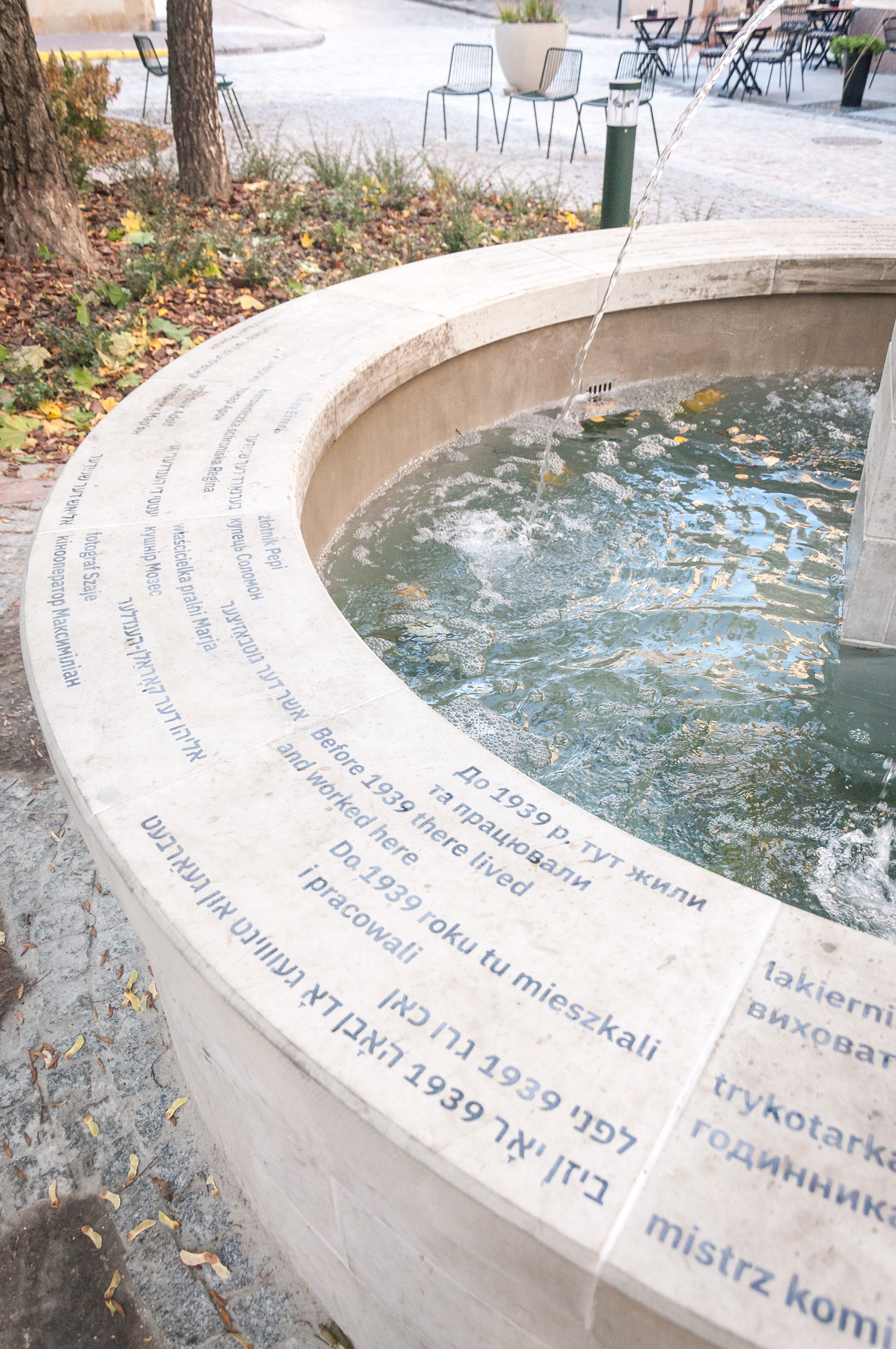
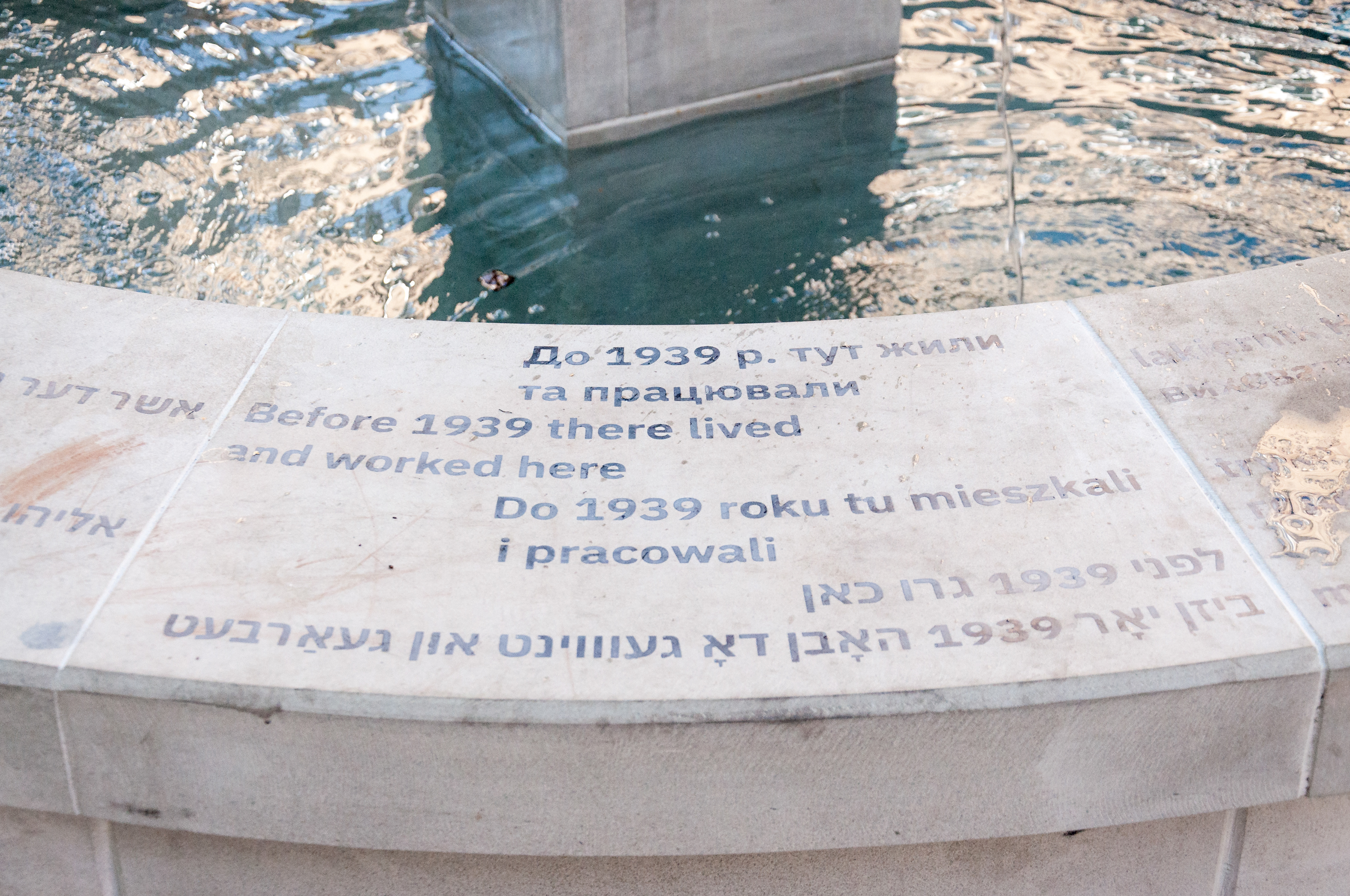
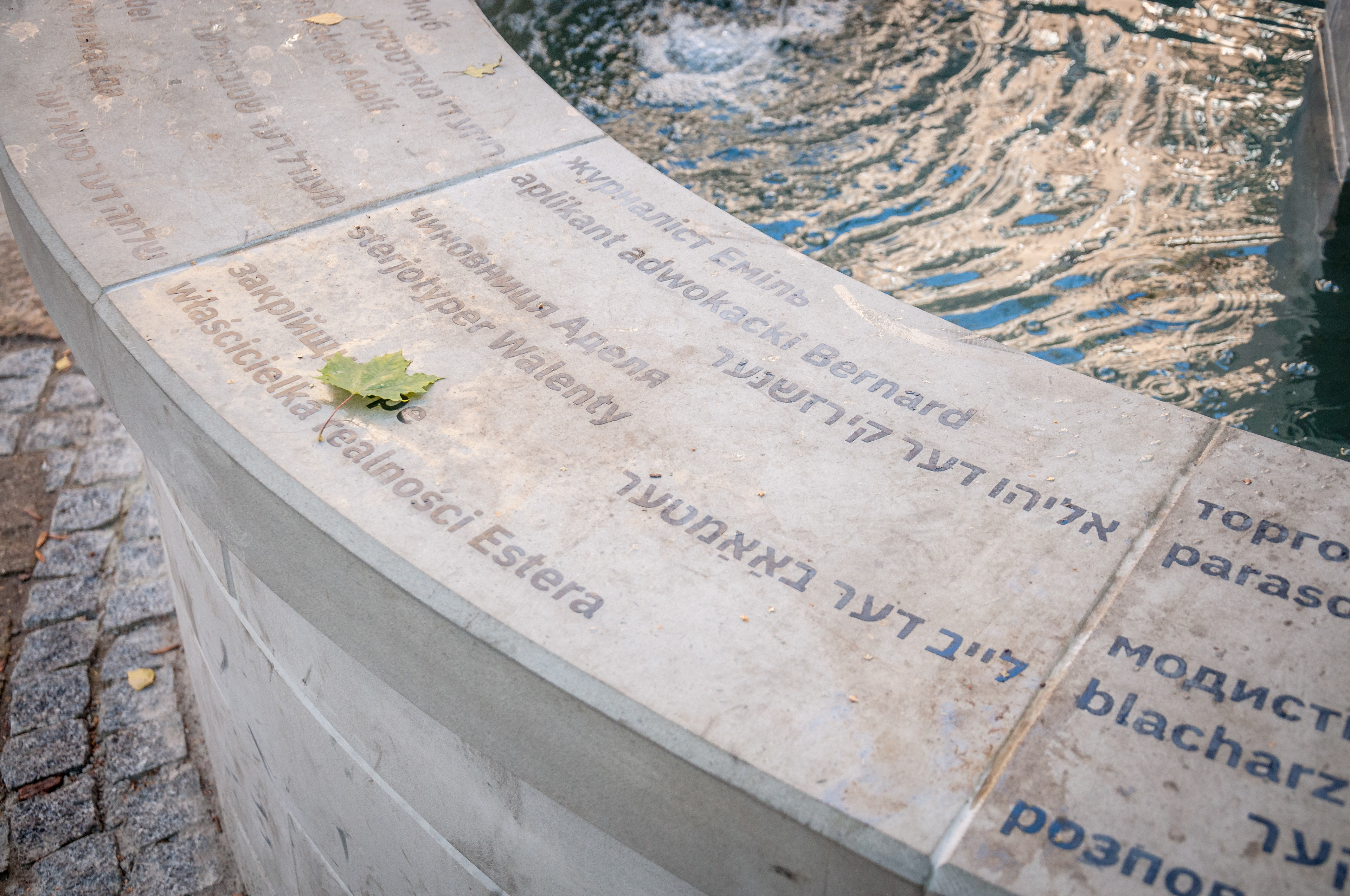
The middle part of the square, which also combines green fragments of the territory, is paved with small granite sawn-chipped cobblestones of light gray color (Pokostivske deposit) measuring 70x70x70 mm. Thanks to this type of coverage, this part of the territory will receive better moisture due to the penetration of rain water into the seams between the cobblestones, and will not remove all rainwater into the sewer, thus creating a more favorable microclimate for greenery and people staying here.
Tracing and reproduction of historical and archeological finds on the square.
On the basis of archeological excavations on the Koliivshchyna Square in Lviv, the location of a well of the XIX-th century was established. And the material from which it was made - natural white stone (limestone), hewn. Based on archaeological research, the project proposes reconstruction of a historical well of the XIX century, in the same configuration and in the same place. The current modern rectangular well, the condition is unsatisfactory and inactive (without water), which was built on Koliivshchyna Square during the reconstruction in the 1960s, will be dismantled, and in its place appeared a new one, designed on the basis of archaeological research and archival drawings of the well.
Before the formation of Koliivshchyna Square, in its place were ancient buildings, dismantled in the XIX century, due to their unsatisfactory condition. The location of the walls of these buildings has been established on the basis of numerous cartographic materials, as well as confirmed by archaeological research. The location of the walls of ancient houses is marked at the level of paving the area with another type of coating (clinker bricks).
All traces in the pavement will also be marked with brass plates, which will contain information about what is traced in this place
Landscaping
Since the square is located in the historic center of the city, the need for environmental comfort is very important. Green areas are located on the square in such way that landscaping is evenly distributed throughout the square (except for emergency services paths) and does not obstruct the movement of people, as well as maintain a more humid and shaded landscaping microclimate. The green areas are framed by large, reusable stone pavement.
Two rows of trees have been planted on the square – Crataegus monogyna 'Stricta' along the buildings facades. This emphasizes the chamber character and small scale of the square and more clearly outlines its boundaries.
Urban equipment
The existing elements of urban equipment of Koliivshchyna Square are in unsatisfactory condition (very corroded and destroyed dumps and benches) and need to be replaced. Historical elements of landscaping have not been preserved. In their place, there are chairs for seats, located throughout the square in different configurations, so it is possible to sit alone or in groups. The project proposes outdoor chairs as seatings, as they adapt well to the small enclosed space of the square and provide different variations of opportunities for sitting and communication, further emphasizing the intimacy of the space of the square.
Tree grilles have been installed under the trees, the pattern of which is comes from the oldest tree grilles preserved in Lviv and until recently located at the entrance to the city park.
The project proposes to install a copy of the historic Lviv lantern. This lantern is located near the well and forms an ensemble with it. It is a single special object, like the well itself, and together they form a dialogue between two unique elements of the square.


